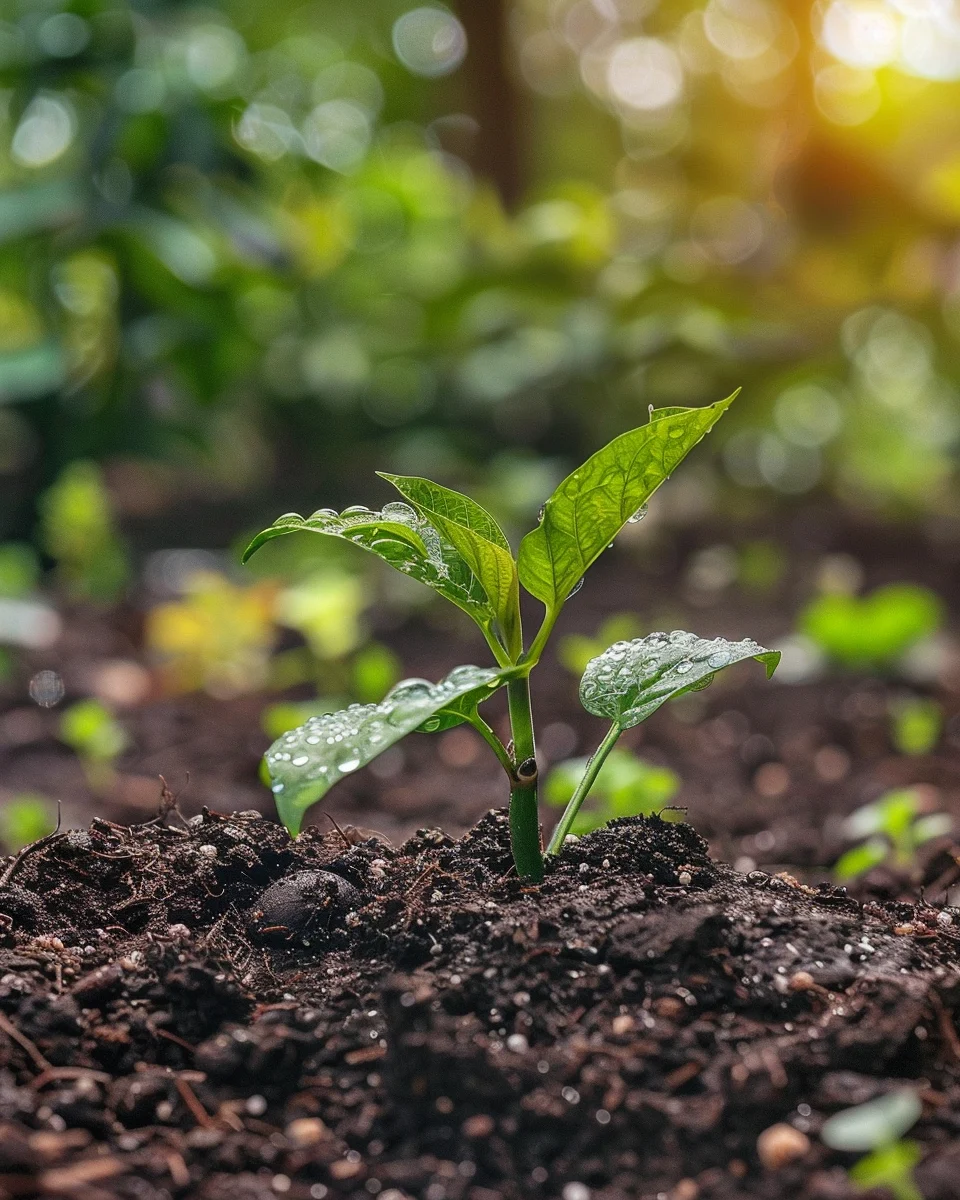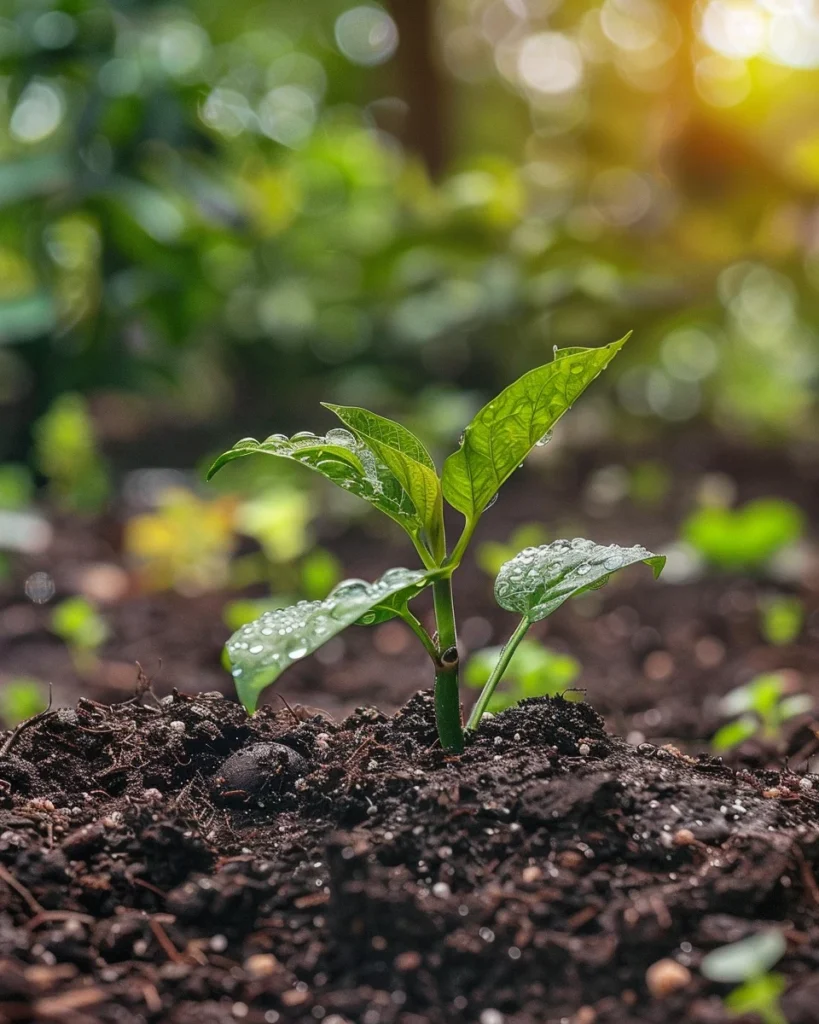The Lazy Way to Compost That Still Gets Results: A Simple, Low-Effort Approach to Creating Garden Gold
Intro for The Lazy Way To Compost
Composting doesn’t have to be a complex science or backbreaking work. The lazy composting method is exactly what it sounds like—a minimal-effort approach that still transforms kitchen scraps and yard waste into nutrient-rich soil amendment. This technique forgoes the regular turning, precise carbon-to-nitrogen ratios, and constant monitoring that traditional composting demands. Perfect for busy gardeners, beginners, or those with physical limitations, lazy composting works with nature’s own decomposition process, just at a slightly slower pace. While it may take longer than hot composting methods, the end result is the same: dark, crumbly compost that improves soil structure, adds nutrients, and promotes healthy plant growth in gardens across all temperate regions.
When to plant The Lazy Way To Compost
Unlike traditional gardening, lazy composting isn’t tied to specific planting seasons—it’s a year-round activity that can be started anytime. However, decomposition works most efficiently when temperatures range between 10-32°C (50-90°F). In colder regions, decomposition slows dramatically below 10°C (50°F), while extreme heat above 32°C (90°F) can dry out your pile. For best results in temperate regions, establish your lazy compost system in spring or early summer when temperatures are warming up and you have plenty of fresh green material available. Winter isn’t ideal for starting a new pile in cold climates, but existing piles will continue to break down slowly, resuming more active decomposition when temperatures rise again.
Best time to plant The Lazy Way To Compost

In cool temperate regions (UK, Northern US, Canada), establish your lazy compost system between April and June when soil is warming and garden cleanup provides materials. For warm climate gardeners (US Zones 8-10, Mediterranean regions), September through November offers ideal starting conditions as summer heat subsides but temperatures remain warm enough for good microbial activity. If using the trench composting method (burying scraps directly in garden beds), implement this 2-3 months before planting seasons to allow materials to break down sufficiently. Container-based lazy composting can be started any month, though indoor systems work best when established before winter in cold regions to provide continuous composting through freezing months.
Best The Lazy Way To Compost varieties to grow
• Cold Composting — The classic lazy approach where materials are simply piled up and left to decompose naturally over 6-12 months; perfect for those with space and patience.
• Trench Composting — Dig a trench, add waste, cover with soil; ideal for directly enriching future planting areas with minimal maintenance.
• Compost Bags — Kitchen scraps and yard waste sealed in black plastic bags with air holes; excellent for small spaces and preventing pest access.
• Leaf Mold — Simply rake leaves into a pile or wire enclosure and wait 1-2 years; creates exceptional soil conditioner with zero effort.
• Worm Bin Neglect Method — A worm bin that requires feeding but minimal maintenance; worms do all the work while producing castings faster than cold composting.
• Bokashi-to-Burial — Ferment kitchen waste (including meat/dairy) in a bokashi bucket, then bury; allows composting of all food waste with minimal effort.
• Chop-and-Drop — Cutting plant material and leaving it in place as mulch; the ultimate in lazy garden recycling.
How to plant The Lazy Way To Compost
Materials list:
• Garden space (1 square meter/10 square feet minimum)
• Kitchen scraps (fruit/vegetable waste, coffee grounds, eggshells)
• Yard waste (leaves, grass clippings, small twigs)
• Optional container (wire bin, wooden pallet enclosure, or plastic compost bin)
• Garden fork or shovel
• Water source
• Soil or finished compost (small amount for “seeding”)
Step-by-step:
1. Choose a level, partially shaded location with good drainage, ideally near your garden but not directly against structures.
2. If using a container, set it up; otherwise, simply designate your pile area on bare soil (not concrete).
3. Start with a 10-15 cm (4-6 inch) layer of twigs or small branches to improve airflow from below.
4. Add a thin layer of soil or finished compost to introduce beneficial microorganisms.
5. Begin adding kitchen scraps and yard waste as they become available—no need to maintain perfect layers.
6. When adding large amounts of dry materials (leaves, paper), sprinkle with water to moisten (should feel like a wrung-out sponge).
7. Cover food scraps with a thin layer of leaves, grass, or soil to deter pests and reduce odors.
8. Continue adding materials as they become available, with no pressure to maintain specific ratios.
9. If the pile seems very dry during hot weather, water occasionally to maintain moisture.
10. Wait patiently—harvest finished compost from the bottom of the pile after 6-12 months while continuing to add to the top.
How to grow The Lazy Way To Compost
Sunlight requirements for lazy composting are minimal—partial shade is ideal as it prevents the pile from drying out while still allowing some warmth. Water only when the pile feels dry to the touch; natural rainfall is often sufficient in many regions. Unlike traditional composting, there’s no strict watering schedule—simply ensure it never completely dries out or becomes waterlogged. Fertilizing is unnecessary as the compost itself becomes fertilizer. For faster decomposition, chop larger materials into smaller pieces before adding them. No turning is required with this method, though occasional mixing (once every few months) can speed the process if you’re feeling ambitious. For container composting, ensure some drainage holes exist to prevent sogginess. Mulching your pile with a layer of straw or leaves helps retain moisture in dry climates and insulates during winter. The lazy method works particularly well in larger containers (at least 90 liters/24 gallons) that provide enough mass for gradual decomposition without frequent attention.
Caring for The Lazy Way To Compost
Ongoing tasks are minimal—simply add materials as they become available and harvest finished compost from the bottom when it’s dark, crumbly, and earthy-smelling. Common issues include odors, which indicate too much moisture or too many green materials; remedy by adding dry leaves, shredded paper, or cardboard. Fruit flies can be deterred by always covering food scraps with brown materials or soil. If animals disturb your pile, consider switching to a closed bin or burying scraps deeper in the pile. For slugs and snails attracted to the moisture, create a barrier of crushed eggshells or diatomaceous earth around the base. Harvest by lifting the bin (if using one) and removing finished compost from the bottom, or simply take from the bottom edge of an open pile. Store finished compost in covered containers to maintain moisture and microbial activity until use. The beauty of lazy composting is that neglect rarely ruins the process—it simply slows it down.
Understanding bolting in The Lazy Way To Compost
While plants bolt (produce flowers and seeds prematurely), compost piles can experience their own version of “bolting” when the decomposition process stalls or becomes imbalanced. This typically happens when the pile becomes too dry, too wet, or too compacted. Temperature extremes can trigger stalling—excessive heat dries materials and kills beneficial organisms, while freezing temperatures halt decomposition entirely. Prevent these issues by locating your pile in partial shade and adding diverse materials rather than large amounts of a single type. If decomposition seems to stall, simply add a variety of fresh materials, lightly mix the outer portions, and ensure appropriate moisture. The lazy method’s greatest advantage is its forgiveness—even if decomposition slows or stops temporarily, it will resume when conditions improve without requiring intervention.
Why does The Lazy Way To Compost turn bitter?
• Too acidic: Excess coffee grounds, citrus peels, or pine needles—balance with crushed eggshells or a sprinkle of garden lime
• Anaerobic conditions: Pile too wet and compacted, causing fermentation instead of decomposition—add dry brown materials and gently loosen
• Nitrogen overload: Too many green materials (food scraps, fresh grass) without enough carbon—add dry leaves, shredded paper, or cardboard
• Incomplete decomposition: Materials haven’t fully broken down—simply wait longer or sift out unfinished pieces
• Contamination: Non-compostable items like meat, dairy, or oils have been added—remove if possible and avoid adding these in future
Companion planting for The Lazy Way To Compost
Good companions for your compost area include comfrey, which produces nutrient-rich leaves that accelerate decomposition when added to the pile; nettles, which attract beneficial decomposers and add nitrogen when included; yarrow, whose deep roots mine minerals from subsoil and whose flowers attract beneficial insects; and nasturtiums, which deter pests while providing colorful trimmings for the compost. Fruit trees benefit from proximity to compost areas, as they receive nutrients that leach from the pile. Avoid placing compost near water features or wells to prevent potential nutrient runoff contamination. Also keep distance from wooden structures, as the moisture and organisms can potentially damage wood over time.
Seasonal calendar
• January-February: Add kitchen scraps; cover with stored fall leaves; harvest finished compost for spring planting preparations
• March-April: Add pruning debris and early garden cleanings; use finished compost in garden beds
• May-June: Add grass clippings (in thin layers); begin harvesting early crops, adding trimmings to pile
• July-August: Keep pile moist during hot weather; add summer garden trimmings and early fallen fruits
• September-October: Collect and add fallen leaves; harvest finished compost for fall plantings
• November-December: Add final garden cleanings; cover pile with thick layer of leaves or straw for winter insulation in cold regions
Problems & solutions
Problem | Quick Fix
— | —
Pile smells bad | Add dry brown materials (leaves, paper); turn outer portions lightly
Attracting pests | Bury food scraps in center; cover with 15 cm (6 inches) of browns or soil
Nothing is happening | Check moisture (should be like wrung-out sponge); add nitrogen-rich materials
Too wet and slimy | Add dry browns; create drainage channels with a stick
Weeds growing in pile | Pull and add to pile; cover top with cardboard or thick mulch
Materials not decomposing | Chop into smaller pieces; be patient—lazy method takes longer
Mold or fungus present | Normal part of decomposition; no action needed unless causing allergies
Common questions about growing The Lazy Way To Compost
How often should I water my lazy compost pile?
Only when it feels dry—typically every few weeks during dry weather. In rainy regions, you may never need to water it.
Can I compost in full sun?
Yes, but the pile will dry out faster, requiring more frequent watering. Partial shade is ideal for lazy composting.
What size container works best for lazy composting?
Minimum 90 liters (24 gallons), but larger is better—at least 1 cubic meter (35 cubic feet) allows for sufficient mass to maintain the slow decomposition process.
How far should I space my compost from plants?
Keep at least 60 cm (2 feet) from active growing areas to prevent root invasion and nutrient competition, though compost-loving plants like pumpkins can be planted directly adjacent.
Can lazy composting work in extreme climates?
Yes, though decomposition slows dramatically in temperatures below 10°C (50°F) or above 32°C (90°F). In very cold regions, insulate with extra straw or leaves; in hot areas, provide shade and additional moisture.
How often should I harvest my lazy compost?
Typically once or twice yearly, removing only the finished material from the bottom while leaving the rest to continue decomposing.
Can I add weeds to my lazy compost?
Yes, but avoid adding weeds with mature seeds or aggressive spreaders like bindweed or bermuda grass, as lazy composting may not generate enough heat to kill them.


